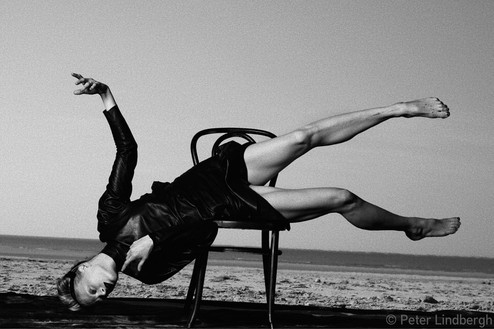1. I enjoy looking at Lindbergh's work, and appreciate his goal to portray women naturally, without the weight of oppressive beauty standards. While I don't believe that he fully did this, as most of his models still follow the conventional standards of beauty (skinny, some wearing makeup, little wrinkles, etc.), I believe that it is significantly better than other works which push for harmful practices and imagery.
2. I would categorize Lindbergh's work as ethical editorial photography, as he works for mainstream media, but is careful not to confine his subjects, particularly women, to the media's strict expectations/definitions of women.

3. Both Peter Lindbergh and Damien Baker try to capture their subjects in an honest manner. The difference between them seems to be that Lindbergh takes a step back to observe the bigger picture of how the world views women, and how he can change that perspective for the better. Baker's photographs, on the other hand, seem to be more intimate and heavily influenced by the pain and struggles he has experienced. He sees himself in the poses, emotions, facial expressions, angles, etc of his photos and subjects. Both are very beautiful, and while I believe Lindbergh's purpose is more important, I enjoy Baker's work more because it is more visually interesting to me.
Lindbergh Baker
4. If someone were to remake Lindbergh's work, it would be more daring and they would take more risks with it. They wouldn't be afraid to experiment with all aspects of femininity from all different cultures. It could be portrayed through different clothes, poses, or environments/backgrounds, but it would maintain a level of clarity and simplicity that defines Lindbergh's original photographs.

5. I appreciate Lindbergh's purpose for the most part. While it doesn't sit right with me that a man is trying to redefine women for the mainstream, I believe he has good intentions. Plus, photographers who are women themselves can take inspiration from his work and purpose to portray women and femininity in a truly authentic light.
Comments
Post a Comment